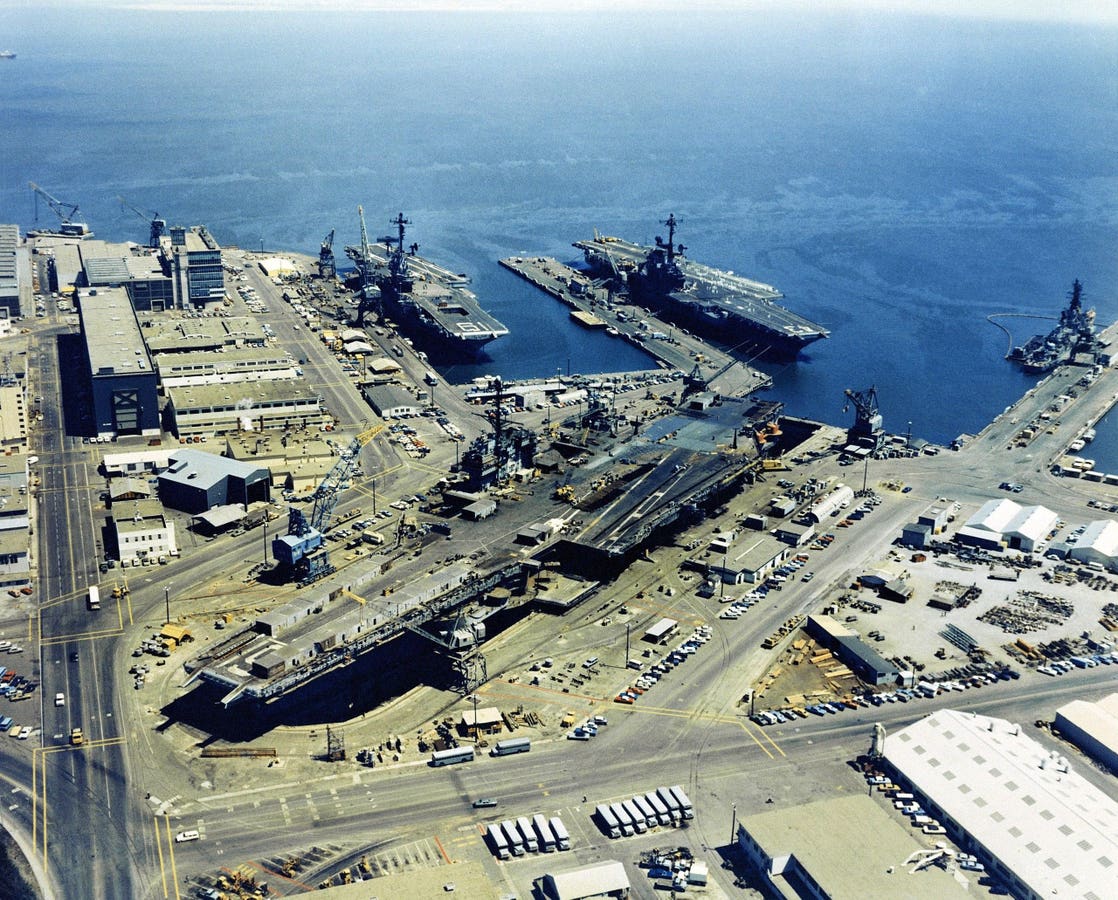Today, as a few lucky San Franciscans prowl the long-abandoned Hunters Point naval shipyard during the Hunters Point Shipyard Artists Open Studios event, defense advocates are pouring over maps, trying to identify coastal sites in the Western United States that might be viable for a future naval shipyard or base. More than a few are eying the long-abandoned Hunters Point Naval Shipyard in San Francisco as a candidate for re-opening.
From afar, the site looks great, but, as a litigation-ensnared Superfund site and a center of early Cold War radiological experimentation, Hunter’s Point is no place for a modern naval shipyard—unless the Navy reverses course right now and embarks upon a bruising fight to retain, refresh, and reactivate the facility.
For the Navy, it would be a heavy, highly litigated lift. Aside from the daunting political and operational barriers to reactivation, the shipyard is sandwiched between some of the priciest real estate in the world. The Navy would have to take great pains to build local, subsidized and potentially government-owned rental housing for aspiring shipyard workers and visiting crew members. It might even need to seize, by eminent domain, some of the property that has already been redeveloped.
It wouldn’t go over well.
Hunters Point itself is not a site that inspires enormous confidence. As an early center for decontamination and radiation exposure research, the yard was a risky industrial experiment in some of the dirtiest eras of America’s industrial history. After more than a century of routine industrial use, over a time when America had few rules to govern radiological substances or basic waste disposal, the site grew to become a contaminated and dangerous mess.
Things have changed. After being shuttered, the site has been intensively studied, remediated, and, in most cases, the shipyard is, by and large, safe to occupy. Right now, the Navy is racing to hand over the remaining and potentially functional pieces of shipyard to San Francisco for redevelopment.
Risks do remain. Even with intensive—and, in some cases, fraudulent—site screening, a few overlooked radiological point sources are likely to pop up. With waste from early decontamination efforts poorly tracked, digging, dredging new channels, or refreshing old drydocks will likely stir up new and exciting radiological or chemical finds.
But, as an industrial wasteland, and a relic of an earlier time, Hunters Point might, given all the site characterization work and remediation, be a perfect place for a new navy shipyard.
Strategically, it might be worth the risk. If the Navy doesn’t act soon, the shipyard will disappear, redeveloped for good.
The Navy Still Owns Hunters Point
If judged on physical characteristics alone, Hunters Point is a great site for a shipyard or Navy base.
Shipwrights recognized Hunters Point’s value long ago. the site has accumulated over 150 years of history as an active shipyard. Entering the industrial age, the first drydock on the site was commissioned in 1868, and in 1903, Hunters Point dockworkers opened what was then the largest dry dock on the West Coast. Operated by Bethlehem Steel, the Navy bought the shipyard in 1939, and took full control of the site on December 18, 1941, and continued making improvements, adding a big super carrier-ready dry dock.
During World War II, the yard was invaluable. With six dry docks—two of over 1000 feet—and plenty of pier space, the yard built four ships and serviced 209 others, repairing battle damage on six aircraft carriers, 17 destroyers, three submarines and one landing craft.
As the U.S. fleet shrank and concerns about base contamination grew, Hunters Point was targeted for closure by the 1991 Base Realignment and Closure Commission. With a rosy estimate that “costs to implement this recommendation will be minimal,” the Navy yard shuttered in 1994.
The closure, of course, didn’t go as smoothly as expected. After decades of pricey cleanup work and controversy, the Navy still owns much of the property. If it were not for the pesky matters of longstanding radiological and chemical contamination, the shipyard would be a great candidate for re-opening—becoming a unique resource on the West Coast.
If the Navy is confident that the site is clean, the Pentagon, as it eyes China, can reverse course, fighting to reactivate the site and return the Navy to San Francisco. But that, of course, would require the Navy to make a controversial decision—something it is loath to do.
Read the full article here





